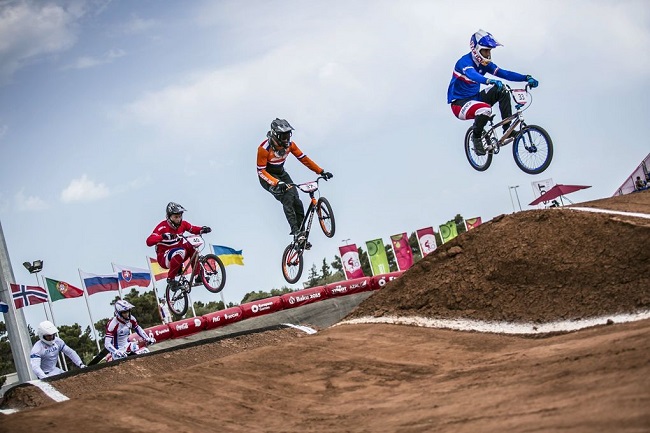BMX is one of the newest Olympic events, giving riders a chance to compete in the most prestigious sports event in the world. When exactly did it start being competed in at the Olympics?
Contents
The BMX Olympic Debut Was In
The first ever Olympic BMX competition was held in Beijing in 2008. Both men and women competed in medal events, however BMX freestyle was only allowed to be an exhibition sport. BMX freestyle was introduced as a medal sport at the 2020 Tokyo Olympics.

There were several obstacles that BMX had to overcome before the International Olympic Committee (IOC) would consider adding it to the Olympic programme. The BMX community has found success with both BMX racing and BMX freestyle.
In this piece, I’ll examine BMX’s meteoric rise, its introduction to the Olympics, and its present history at the Games.
Accelerating Growth of BMX
The sport of BMX took about 40 years to gain official Olympic recognition after its inception. BMX is a thrilling spectator sport since it is essentially a bicycle version of motocross, which features a wide variety of tricks and dangerous falls.
But the question remains: where did it start? Around the turn of the 1970s, BMX gained popularity on the West Coast of the United States. Youngsters were already riding their bicycles at high speeds around dirt courses and pulling off remarkable stunts in an attempt to mimic the popular motocross sport.
It didn’t take long for BMX racing to be started, and BMX pioneer Scott Breithaupt is widely credited with putting on the inaugural race. Though primarily on motocross, the 1971 documentary “On Any Sunday” included enough about BMX to urge more kids to venture to the off-road trails on their bikes, contributing to BMX’s rapid expansion across the United States.
Structure for BMX was greatly aided by the founding of the American Bicycle Association (ABA) in 1977. The American Bicycle Association (ABA) was the first national BMX sanctioning body, and they pioneered the use of electronic starting gates, among other advances.
BMX was just beginning to implement the policies and procedures the IOC requires of prospective medal sports.
A Spot in the Olympic Games
Increasing BMX’s global reputation and participation is necessary before it can be considered for the Olympics. This was accomplished, since audiences outside of the US showed interest in the thrilling 30- to 40-second races.
The inaugural BMX World Championships were held in Dayton, Ohio, in 1982. As a result, the sport of BMX racing advanced to yet another significant turning point. BMX racing has been regulated by the Union Cycliste Worldwide (UCI) since 1993. The UCI is the international regulatory organisation for cycling.
Previously separate from the body that governed more conventional cycling competitions like track and road racing, BMX is now part of the same family. Once considered more of a “underground” activity, BMX is now firmly established as an integral component of the larger cycling community at large.
Ten years later, the UCI attended the IOC meeting in Prague. They made their case for BMX to be an Olympic sport here. With the approval of the International Olympic Committee, BMX will make its Olympic debut in Beijing in 2008.
History Olympic Competition
BMX first appeared on the Olympic schedule in Beijing in 2008. Maris Strombergs, a Latvian, took first place in the men’s competition. Anne-Caroline Chausson of France became the first female athlete to win an Olympic gold medal in this sport.
Among the several types of cycling, BMX is both the youngest and the quickest. The idea behind it is straightforward: eight riders race through a course that features various obstacles, including jumps and sharp turns.
The World’s Most Popular Sport
The first meeting of the International BMX Federation took place in April 1981. In a short amount of time, BMX established itself as a distinct activity, and it became obvious that it shared more with cycling than motorcycling.
The International Cycling Union acknowledged BMX’s legitimacy as a cycling discipline when it accepted the sport in 1993. (UCI).






























